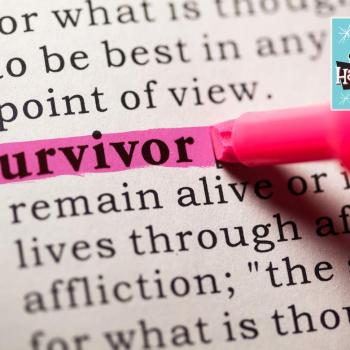It’s extremely important that parents use proper technique if they are going to spank their children. Give your child a warning before each spankable offense. If he deliberately disobeys, inform him of the upcoming spanking, escort him to the designated room, and mete out the punishment. Typically this would involve one or two swats on the buttocks (not that while there may be a transient redness immediately following a spanking, it should never be done in such a way as to bruise a child. Follow up the spanking with a brief review of the offense.[1] ~ Focus on the Family
Before I get into the meat of this article, I’ll give you a moment to compose yourself after reading that dreadful quote from Focus on the Family. Clean up the vomit you just spewed out. Get a drink of water. Listen to a five-minute meditation video on YouTube. Yell your favorite cuss word into a pillow. And then come back to this page.
Okay, better? Great. Now let’s get into it.
If you weren’t aware, I live on the fringes of Christianity. At best. It’s more likely that I’m just outside the fringes, but I’ll let the detractors quibble over the details. Either way, because of my less-than-Christian status, I’m often asked questions like, “What do you do about how to raise your daughter? How do you discipline her?” or, “If you don’t go to church, what do you tell her about God?” Well, to be honest, not much. God is first and foremost an experience, and my words, jumbled as they often are, would probably only get in the way. Plus, it’s my goal to have my daughter unlearn as little as possible, and at this moment in time, it’s best to simply model what I think God is like rather than blab on about it.
However, there are some things I teach her, and some things she simply knows from experience, and we are going to cover all of it in the sections that follow. First, though, I want to discuss what I believe are the two biggest problems with how Christian children are often raised—you know, in order to sweep away some of the toxicity before getting to the good stuff.
All Are Welcome?
First, have you ever seen those churches who advertise that all are welcome? Then you check out their statement of faith or listen to just one sermon and realize that you have a different working definition of “welcome?” And “all.” And perhaps even “are.” Yeah, there are way too many of those places.
These types of Christians—the ones who only pay lip service but don’t really mean it—are one reason why my wife and I don’t raise our daughter in the church. We don’t want her to grow up thinking that it’s okay to call exclusion by its opposite name.
Now, that is not to say there aren’t truly inclusive churches—churches that really do welcome the LGBTQ+ member, churches that really are in the business of racial reconciliation, churches that really do lift up and celebrate non-Christians. Unfortunately, these churches are few and far between. More commonplace are the churches who teach children to reject those not like them, to reject their non-Christian friends, to approach their peers only with the clandestine agenda to convert them. Think about a semi-famous John Piper quote I’ve used before. Pay attention to the language he uses: “Marriage is not absolutely for making children. But it is absolutely for making children followers of Jesus”[2] Making. Forcing. You will do this. Not teaching them what Jesus-following looks like. Not letting them choose for themselves. Making them do it.
This runs counter to what children naturally do in life. Without imposing our agendas on them, they view the world with wonder and awe. They include their friends, no matter what their friends look like, which God they worship, whom they love, how much money they have or don’t have, and so on. It’s only when we force them to do something, do they turn into the exclusionary Christians people so often equate with Christ.
Spare the Rod, Spoil the Child?
Those who spare the rod hate their children, but those who love them are diligent to discipline them. ~ Proverbs 13:24
The second issue when it comes to child-rearing is that Christianity—the Christianity I myself grew up with—argues in favor of a punitive and physical form of discipline. It was often said how kids will become spoiled brats if they are not spanked. After all, the Bible was clear.
Except it’s not. And that’s okay. The Bible shouldn’t be our authority on this matter anyway. And even if it is our authority, even if the aforementioned quote from Proverbs is to be our measuring stick for what good parenting looks like, it is but an analogy. I mean, are any Christians today arguing in favor of hitting their kids with literal rods? God, I hope not!
As an analogy, though, I’ll admit that it can work. Discipline is healthy. As the writer of Hebrews states, “Discipline always seems painful rather than pleasant at the time, but later it yields the peaceful fruit of righteousness to those who have been trained by it” (Heb. 12:11). But discipline need not involve spanking. The two are not synonyms.
What Does the Science Say?
Not only can discipline be instilled without including corporal punishment, the science says that physical punishment should never be used. According to the American Academy of Pediatrics, “Aversive disciplinary strategies, including all forms of corporal punishment and yelling at or shaming children, are minimally effective in the short-term and not effective in the long-term. With new evidence, researchers link corporal punishment to an increased risk of negative behavioral, cognitive, psychosocial, and emotional outcomes for children.”[3] The American Psychological Association is in agreement. Writing for The Monitor, Brendan L. Smith cites various professionals, including University of Michigan’s Sandra Graham-Bermann, PhD, Yale’s Alan Kazdin, PhD, and University of Connecticut’s Preston Britner, PhD, who all agree that physical punishment causes long-lasting harm.[4] Smith concludes: “Many studies have shown that physical punishment—including spanking, hitting and other means of causing pain—can lead to increased aggression, antisocial behavior, physical injury and mental health problems for children.”[5]
Unfortunately, as Smith would later point out, roughly two-thirds of Americans still approve of parents spanking their kids.[6] Why is this the case? I can only guess. To my mind, the reasons are at least two-fold.
Old-Time Religion
The first reason I believe the majority of Americans still support parents hitting—ahem, spanking—their children is because it goes hand in hand with their religion. What I mean is that their theology matches up with physical punishment. Think about it. When you imagine what type of God most people believe in, what image comes to mind? Unless you’ve deconstructed your old-timey religious views, you probably picture a judge. Perhaps you imagine a big white dude in the sky, meting out punishment on the so-called wicked. I’m guessing you believe there is an eternal hell for those who don’t make the cut. I could continue, but you probably get the point: we parent in the same way our God “parents” us.
The reason for this is pretty simple. We are mimetic beings. If you’ve read Heretic!, you know what I mean by that. We imitate those whom we look up to. If our model of desire dresses a certain way, we dress a certain way. If our model of desire has a certain car, we desire a certain car. If our God is a punitive disciplinarian, we tend toward being a punitive disciplinarian. And frankly, the God of many a Christian is just that; perhaps loving when he wants to be, but cross him and you’ll get his more wrathful and vengeful side.
Change is Hard
The second issue I see when it comes to our society’s insistence on hitting kids is that change is difficult. If you are thirty or forty or older, you probably grew up in a home where spanking was a common practice. That’s because our parents, the so-called Baby Boomers, were raised by parents who hit them with all sorts of household items—spatulas, flip-flops, whatever happened to be in their hands at the time. Our parents generally moved away from that a bit and just used their hands or, at worst, a belt. And now, hopefully, we can start moving away from that outdated idea and embrace a more compassionate, science-driven model.
Again though, change is hard and turning a big ship takes time. It takes time to educate people on this issue, so all I can say is that if you are reading this and you agree with me, be that change. Start in your own home and then move outside your borders. The more of us who do that, the quicker that needed change will come.
Compassionate Inclusion, Compassionate Discipline
Okay, so it’s obvious that this article is not going to argue in favor of either limited inclusion or corporal punishment. That much is clear. But what do we replace these ideas with? What do we replace top-down authoritarianism with? How do we go about teaching our children to include everyone, regardless of race, religion, color, creed, or sexual orientation? Also, how do we discipline our children compassionately, without using physical violence, harsh language, or even threats? Well, that’s going to take some creativity and patience, but in the end will hopefully be well worth it.
First off, when it comes to inclusion and whom our children accept, we probably don’t have to teach them much. For many, it will be more about unteaching. As I said earlier, children tend to approach the world with awe and wonder. It’s only when we impress upon them our messed-up ideas that they turn into little tyrants. If we remove our need to make them think in certain ways, they tend to be much more well-rounded and accepting.
Take, for instance, my daughter Elyse. We’ve never necessarily taught her to affirm the LGBTQ community. She just knew it was right to accept who people are. Full stop. When I came out to her as bisexual, then, her response was, “So?” Not because she doesn’t care about me, but because it’s such a non-issue that she couldn’t understand why I thought it was newsworthy. For me to accept myself, on the other hand—given that I was taught anything other than hetero is sinful—it took much more time and effort. For her, it was a no brainer.
Focusing now on discipline; this is where many need to take a one-eighty and become way more inclusive. What I mean is that when you discipline your children, you include them in the process. It’s never a “power over” thing, but a “power with” thing. “Power over” is the old model. That model uses phrases like, “Because I said so.” That model is all about telling children what to do because you are their parent and they should blindly follow your authority. In contrast, when you have a “power with” model, you stand alongside them and help them see for themselves where they are going astray. You ask things like, “What do you think will happen if you continue to do that?” Or, “If your friends were treating you how you are treating me, how do you think you’d feel?”
Of course, asking rhetorical questions will not be the end-all-be-all solution to your problems as a parent. Your children will push back. They will give you attitude. Not everything will be smooth sailing. However, the more consistent you become, the more your child will work in tandem with you, rather than fighting you at every step along the way. You have to show them how to do this, however. Being an authoritarian will only teach them to eventually be authoritarians themselves. Remember, we are mimetic beings.
The more you implement a “power with” approach, though, the more your relationship with your child will blossom. But you need three components: Respect, collaboration, and limitation.[7]
- Respect: See your children as individuals, valuing their feelings and views.
- Collaboration: Work together with your children and adapt to issues that arise.
- Limitation: Impose age and maturity-appropriate boundaries, keeping in mind their safety and security.
With these three components in place, your role as a parent can move from the need to control the situation into true, authentic relationship with your child. When your child feels respected and valued, they feel heard. When you and your child collaborate, your relationship strengthens as you use your creativity to come up to solutions to complex problems. And when you put in place appropriate boundaries, you are encouraged to explain your reasoning, which creates dialogue, again leading to a stronger relationship.
Is any of this easy? No, not necessarily. In the moment, we may feel like yelling “Because I said!” Perhaps doing so will even “work.” Maybe that top-down approach will get your kids to do what you want from time to time. But will that lead to happy, healthy children? The data says “no.”
What Compassionate Parenting Looks Like
Some of you may be thinking that this model is “soft,” that it will only lead to unruly children. But let’s not conflate compassion with passive. This isn’t passiveness. In fact, this model requires consistency and diligent activity. Psychologist Johanna Marie Kalkreuth lays our four key steps one must take in order to instill compassion-forward discipline.[8]
- Inner Discipline
Earlier, I mentioned mimesis with regards to imitating the Gods we believe in. But mimesis isn’t just about God. In fact, it is first and foremost a human thing. Kids, then, first learn by imitating their parents. To that end, if a parent is self-disciplined herself, there is likely to be an imitative learning that happens for the child. So, instead of “monkey see, monkey do,” we have “child see, child do.”
Real-World Application: Think of all the conflicts that married couples get into over the course of their marriage. These can all be opportunities to model what it is like to work through an issue together, while maintaining healthy boundaries and respect for one another. Don’t hide all of your issues behind closed doors. Some problems, if age-appropriate for the child to witness, can be resolved in front of them. Allow them to see that relationships can be messy and yet, still maintain healthy respect.
- Relationship
If you truly want your children to succeed in this area, you have to develop a strong relationship. Again, this isn’t primarily a “top down” relationship, where you are the ruling king or queen, but one of mutual respect and care. In other words, you don’t get your children to do something because they fear you; you get them to do something because you’ve cultivated a trusting relationship.
Real-World Application: Be an open book with your child. Tell them about what you were like as a kid and don’t be afraid to share some of the juicy details. Put aside your ego and allow yourself to be embarrassed. You child will typically respect you for that. Don’t put yourself on a pedestal and think that what you child requires is a pristine parent. They need someone they can trust to be real and vulnerable with them.
- Age-Appropriate Goals
You wouldn’t expect a tomato sprout to pump out vine-ripe tomatoes, so don’t expect your five-year-old to act like a thirty-five-year-old philosopher king. If you have goals for your children that aren’t age-appropriate, you are setting them up for failure. Frustration. Insecurity. This will only lead to behavioral issues.
Real-World Application: Keep the lines of communication open. Have your child set goals for themselves, and then chat with them about how they will go about accomplishing them. Don’t get into power struggles. If there are needs to be met—bathing, feeding, cleaning, etc.—give them the expectation, but allow them to come up with solutions as to how they will accomplish them. And always adjust as needed. These are goals you put in pencil, not upon a stone tablet.
- Growth Opportunities
Children are going to make mistakes. They are going to process things in ways that you as an adult don’t quite understand. Allow them to do this in safe, manageable environments. This is part of the relational aspect of compassionate parenting. Don’t punish their mistakes. Point them out and encourage them to learn and grow from those mistakes. As the old adage goes, “The only real mistake is the one from which we learn nothing.”[9]
Real-World Application: Kids are going to fail at their goals. They are going to forget to clean up after themselves. They are going to forget to finish their homework. They’ll fight you about whether they need to take a shower. Let them make a mistake from time to time. Mistakes, in safe and secure environments, are just fine. If they don’t finish one math sheet, let them face their teacher the next day. If they don’t pick up their room, maybe the puppy happens to chew something of theirs that they like. Natural consequences go along way, and closely managed mistakes can be great teaching tools.
Now, please don’t think of these four key steps in a linear sort of way. They aren’t that. You don’t go from step one to step two to step three to step four. These are four areas of growth you and your child are working on at the same time. For example, while you work on your inner discipline (step one), you are implementing age-appropriate goals (step three), which your child will sometimes not achieve, thus leading to their growth (step four). All the while, you are observing and taking note, supporting them along the way. This leads to a trusting relationship that strengthens over time (step two).
Again, this is by no means a passive system. It requires patience and consistency, but if implemented, gives your child the best opportunity to grow into a happy, healthy individual. As Dr. Kelkreuth so eloquently puts it:
Compassionate, relationship-based discipline [ . . .] allows a child to grow into their next developmental phase in a healthy way, held by strong boundaries, loving connection, and a sense of security. It allows the greatest potential and highest functioning of the child to grow and flourish.[10]
Some Final Thoughts
Let me be clear: none of what I said throughout this essay is meant to shame parents who have taken a more punitive approach. If you have spanked your child or have been less than inclusive in your parenting style, you are not an evil person. My parents’ generation didn’t have the data we now have. They were all working with what they had. However, now that we have more robust data when it comes to certain parenting practices, we can implement better practices. It doesn’t stop with us, though. In the future, our children and children’s children will likely have even more data, and will hopefully build upon what we now know. The point is that we continue to grow and progress.
So, thinking back to the quote from the book of Proverbs; yes, to love your children is to discipline them. The question, then, is how do we do this? Do we rule our homes with an iron fist, instilling the so-called fear of God in them? Do we come down upon them like a Nero or a Caligula? Hell no! We stand beside them and guide them. We practice inner discipline ourselves, and then model for them what doing right looks like. We replace “power over” with “power with.” Because when we do this, we not only help them grow and flourish, we strengthen our bond with them. They no longer see us as an authoritarian; they start seeing us as a mentor and a guide. It’s a different kind of authority, one that values the autonomy of the child and helps lift them up with dignity and honor.
[1] From Focus on the Family, “Questions About Spanking,” which can be found at http://www.focusonthefamily.com/family-qa/questions-about-spanking/.
[2] Piper, John. This Momentary Marriage: A Parable of Permanence. Wheaton: Crossway, 2012, 93.
[3] Sege, Robert D., and Siegel, Benjamin S. “Effective Discipline to Raise Healthy Children.” In Pediatrics. Vol. 142, Issue 6. December 1, 2018, Abstract, para 1.
[4] Smith, Brian L. “The Case Against Spanking.” American Psychological Association. Vol. 43. No. 4. April 2021. http://www.apa.org/monitor/2021/04/spanking, en toto.
[5] Ibid., para 3.
[6] Ibid.
[7] Pribanova, “Compassionate Discipline,” sec. 2.
[8] Kalkreuth, Johanna Marie. “Compassionate Discipline: Further Explained.” Institute of Child Psychology. (October 26, 2020). http://instituteofchildpsychology.com/compassionate-discipline-furtherexplained/, en toto.
[9] Quote by Henry Ford, unknown source.
[10] Kalkreuth, Johanna Marie. “Compassionate Discipline: Further Explained.” Institute of Child Psychology. (October 26, 2020). http://instituteofchildpsychology.com/compassionate-discipline-furtherexplained/, para 8.
If you wanna get to know me better, please follow me on social media. I’m pretty active on all platforms:
Also, if you’ve been digging my work on here, and want to see me be able to continue writing as close to full-time as humanly possible, please take a look at my Patreon page at www.patreon.com/mjdistefano. Even $1 a month helps bigly!!!















